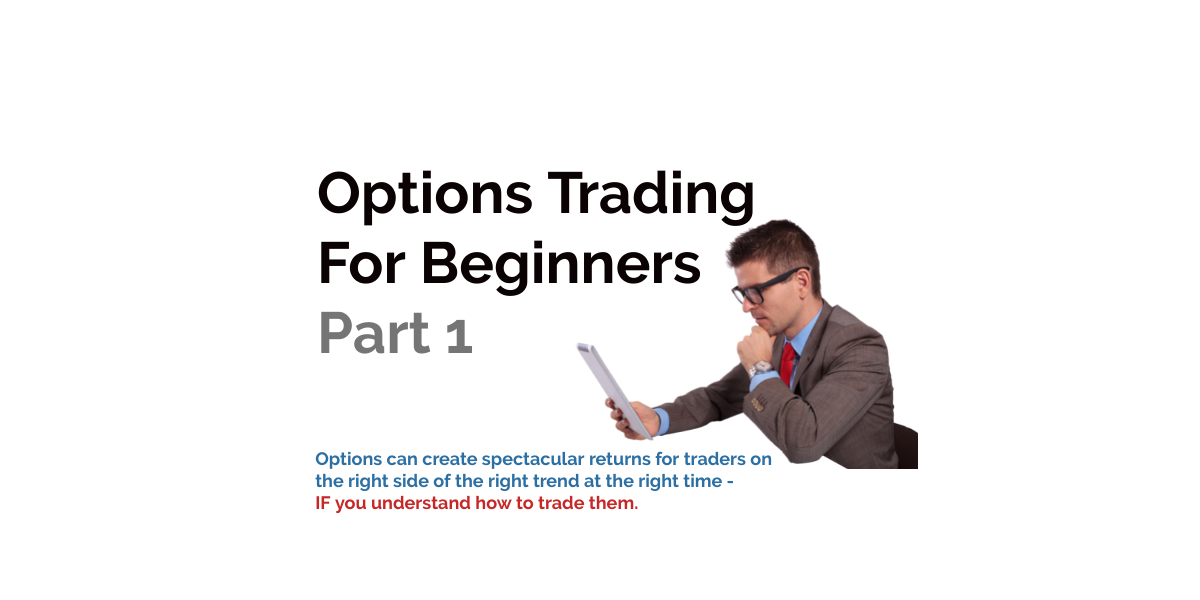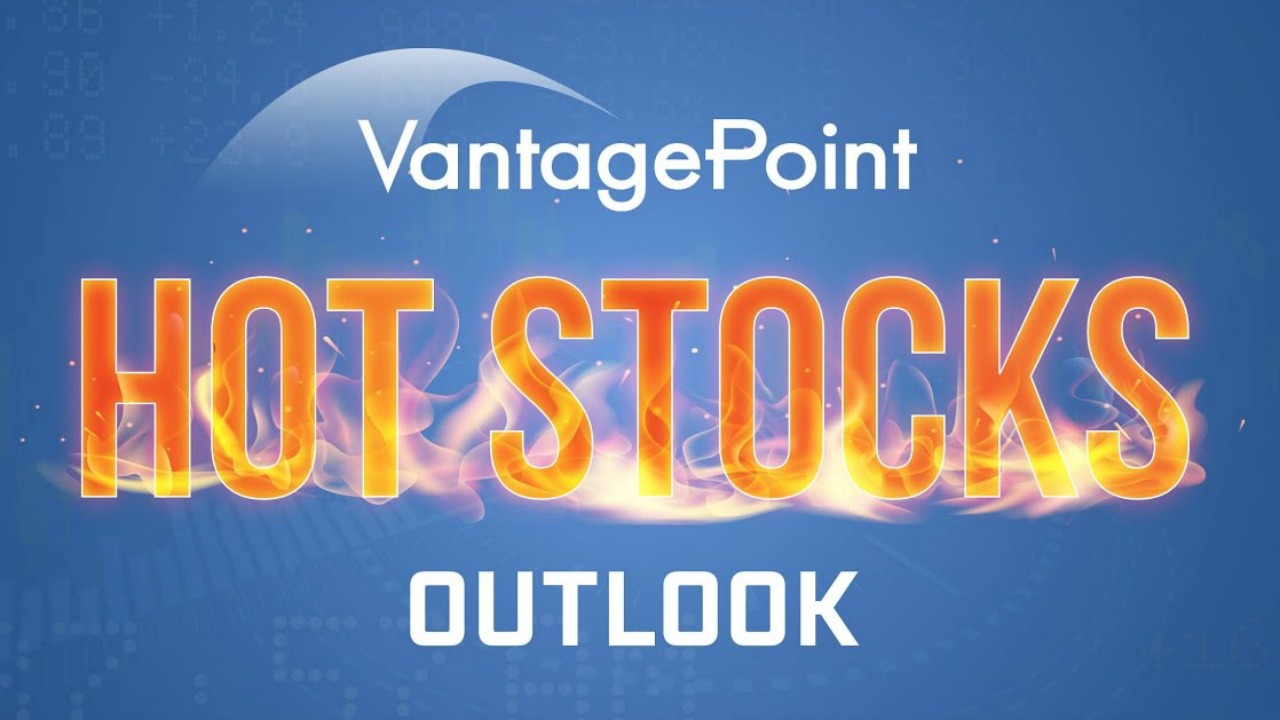If you trade for any period of time, you will eventually begin to hear about “options.” Options can create spectacular returns for traders on the right side of the right trend at the right time. However, it has been my experience that most traders only partially understand OPTIONS. In this series, Options Trading for Beginners, I will discuss the basic options building blocks and strategies that lay the foundation for what options are and how they work with the hopes it will illuminate the risks, potential rewards, and realities on this sector of the financial trading marketplace.
There are four fundamental options strategies. The following graphic views each in isolation and simply focuses on the desired price directionality for the option to be profitable.
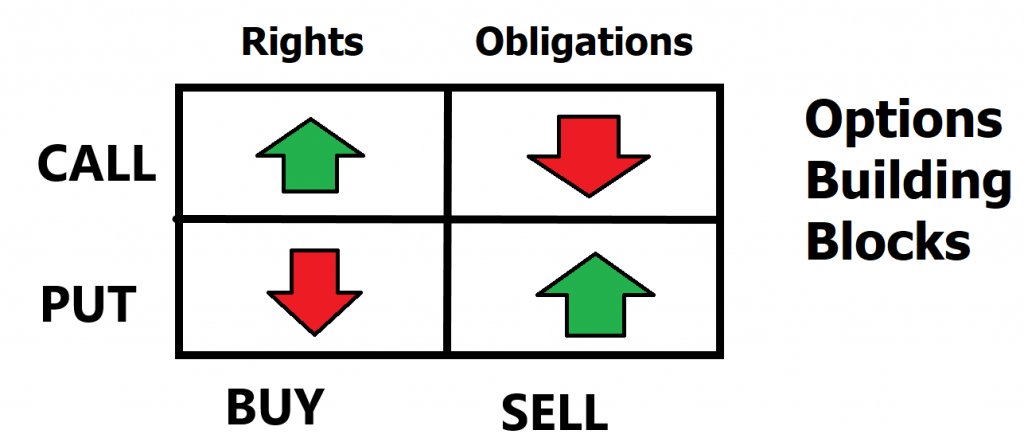
To truly comprehend what an option is we need to differentiate between a “right” and an “obligation.” Whenever someone purchases an option, they have a right. Essentially this means that a buyer is paying a premium to the creator of the option to have the “right” to buy an asset at a specific price between now and an expiration date. This is a foundational definition that elaborates the important characteristics of all options. Those being that an option is a derivative contractual agreement that is good for only a specified period. The buyer of the option is not obligated to perform. The buyer of the option has a right.
The simplest way to think about this is simply look at any insurance policy you have ever owned. It is an options contract. You, as the buyer of the insurance policy, have the right to a certain amount of protection between now and an expiration date. For this right you are paying the insurance company a premium for providing that coverage. Your insurance policy has an expiration date beyond which you have no protection unless you renew your policy and pay another premium.
All options share these same identical characteristics.
A Call Option gives the buyer the right, but not the obligation, to own the underlying asset between now and the expiration date in exchange for paying a premium.
As the buyer of the option, you have theoretically unlimited profit potential. This is because the stock can theoretically go to infinity.
Each option contract in the stock market controls 100 shares.
The option also has an agreed-upon price where you have the right but not the obligation to own the underlying asset. This is referred to as the strike price.
Each option also has an expiration date. This identifies the length of the contract. Most options are available in 30-, 60- and 90-days contracts. But they also trade LEAPS which are long-term options with durations of a year or longer.
Each option has a premium amount which represents the cost of buying or selling the option. This means that for options buyers they pay the premium amount and control 100 shares of the underlying asset until the expiration date.
To illustrate this concept. Let’s break down an example.
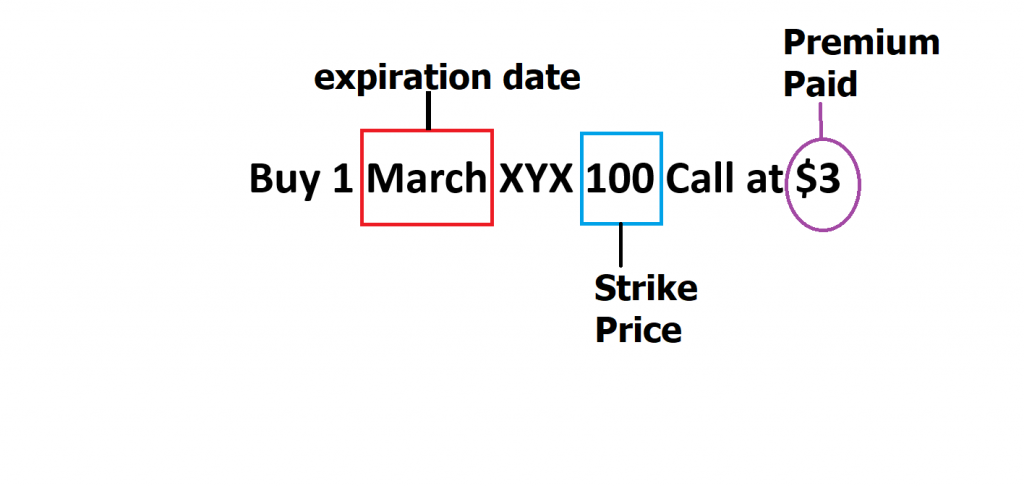
This example illustrates that the buyer has the right, but not the obligation, to own XYX stock at $100 a share between now and the March expiration date and they are paying a $3 per share premium for that right.
Is this a good deal?
Well, it all depends on where XYX is trading at expiration.
But it is important to know as an option buyer you have theoretically unlimited profit potential and limited risk.
While this sounds very attractive, you need to take each options trade on a case-by-case basis to determine what the actual probability of profit is. Unlimited profit potential sounds “sexy” but it can be disastrous if your probability of profit is low.
While most options contracts are very liquid and are actively traded, when you study options, it is important to understand the arithmetic based upon what the profit and loss would look like at the expiration date.
To calculate the break-even price on an option if it is held till expiration, you simply need to add the premium paid for the option to the strike price.

So, in our example, the break-even price is $103 at expiration. We calculate this by adding the premium paid to the strike price. This arithmetic is based upon the example of a buyer of the option holding the option till expiration. However, most options are not held till expiration.
At any price over $103 a profit will be accomplished. At any price below $103 a loss will occur. At any price under $100 the option will expire worthless, and the entire premium will remain with the creator (seller) of the option.
The risk is limited to the premium paid. So, the most that the call option buyer can lose is the $3 per share.
The most effective way of comprehending the possibilities of this trade is to look at the risk/reward profile graph which highlights what the profit or loss will be at expiration based upon the underlying assets price.
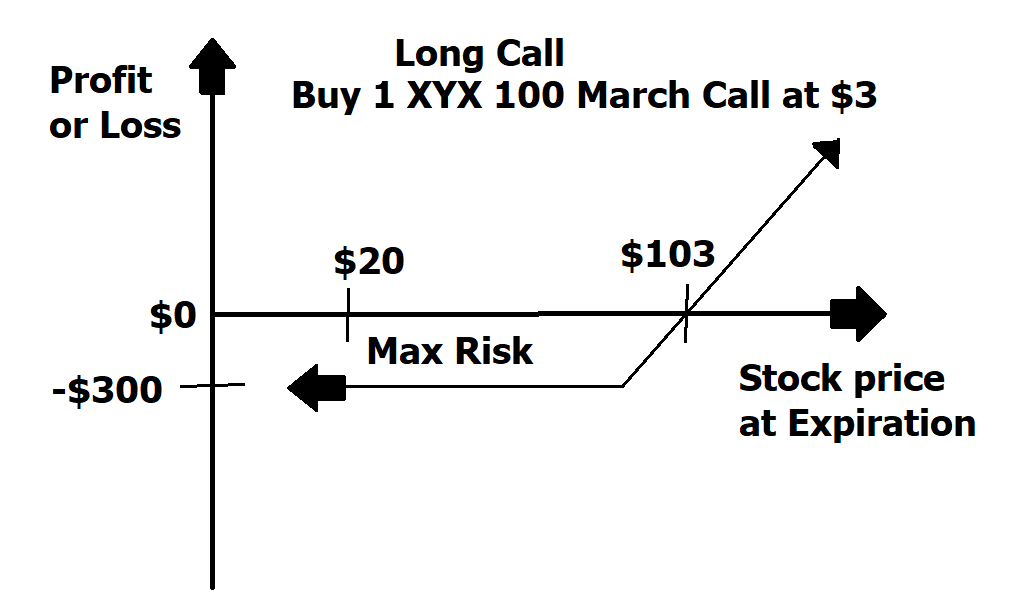
The graph is very simple to grasp.
The call option buyer has a maximum risk of $300 which is the premium paid. The stock could go to ZERO and the most that the call option buyer will lose is the $300 premium paid.
At any price over $103 the option is profitable. For example, if the underlying stock goes to $110 by expiration the option is worth at least $10 minus the premium of $3 paid for the option. Since the buyer only paid $3 for the option, they would have a healthy profit.
As you familiarize yourself with these concepts and ideas, I want to shed some hard, cold truth on call option buying.
Ready?
80% of options expire worthless.
Huh?
Whenever you consider trading options you need to understand that you are dealing with a time-sensitive instrument. In other words, options are deteriorating assets which all things being equal, will be worth less tomorrow than they are today.
In our example, the premium which we were paying to buy the $100 XYX call option was $3 per share.
If we know that the expiration date is 30 days away, we can calculate that the premium for the option will deteriorate in value by 1/30th for every passing day. Options traders refer to this as “time decay” or “theta.”
Time decay is a measure of the rate of decline in the value of an options contract due to the passage of time. This time decay accelerates as an option’s time to expiration draws closer since there’s less time to realize a profit from the trade.
Here is a simple graph that illustrates the gravitational pull of time decay.
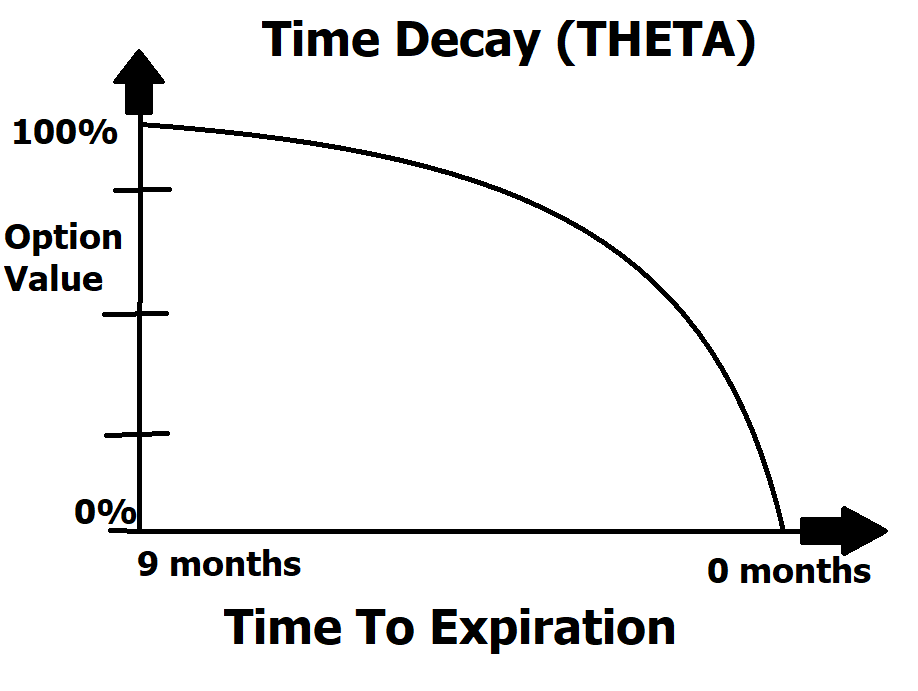
As the above graph illustrates the closer you get to the options expiration date the less the option will be worth.
As traders and speculators this knowledge and understanding is paramount so that we can make good trading decisions.
So, why would anybody buy a call option if 80% of the time they expire worthless? In a nutshell, the answer boils down to an understanding of risk and an understanding of the possibility of reward.
In an environment when volatility is increasing option buyers usually do quite well. However, when volatility is decreasing, options premiums deteriorate very quickly, and options sellers do quite well.
Imagine that earnings are coming out on a stock. You think that earnings could send the stock 30% higher or lower in a few days.
Instead of owning the underlying stock, it would make much more sense to buy a call option with very limited risk to capitalize on the potential rise in the asset than owning the stock.
But it is vital that you understand that the premium you paid for the option will be worth less and less with each passing day, all things being equal.
Today options are traded on stocks, bonds, futures, indexes, cryptocurrencies, and ETFs.
Key takeaways:
- An options value is tied directly to the underlying asset and the duration of the option.
- Options are typically 30, 60 or 90 days but there are LEAPS which go out a year or longer. The greater amount of time left in an option the more expensive it will be.
- Call options give the buyer unlimited profit potential with limited risk.
- Most options expire worthless since options are deteriorating assets.
In this article, I have focused specifically on the purchase of call options.
Earlier in this article, I compared options to insurance contracts. I think this is the best way to understand the dynamic differences between rights and obligations. Insurance companies have become massive financial structures because they manage risk very effectively. In other words, they sell policies and collect premium which most of the time expire without any claims. More importantly, these same insurance companies understand the importance of the contractual obligations they enter every day.
The simplest and fastest way for you to master options trading is to trade them ‘on paper’ for 30 days. Simply open a demo account with your favorite brokerage and demo trade. Then you could ‘buy’ the call options to see and understand how they behave in relation to the underlying stock price. This is the education all traders need. You will quickly come to understand the risk, rewards, and realities of these very exciting financial instruments though paper trading.
In this series for Options Trading for Beginners we will cover the 4 basic fundamental option strategies. Today we have only covered buying call options. In our next article we will cover in depth, buying put options which are rights to be “short the stock” at an agreed upon price in exchange for paying a premium.
When you comprehend all four of these basic structures you will be capable of creating positions which greatly increase your probability of profit and generating income from the marketplace.
Options Mastery requires that you understand all four basic building block components:
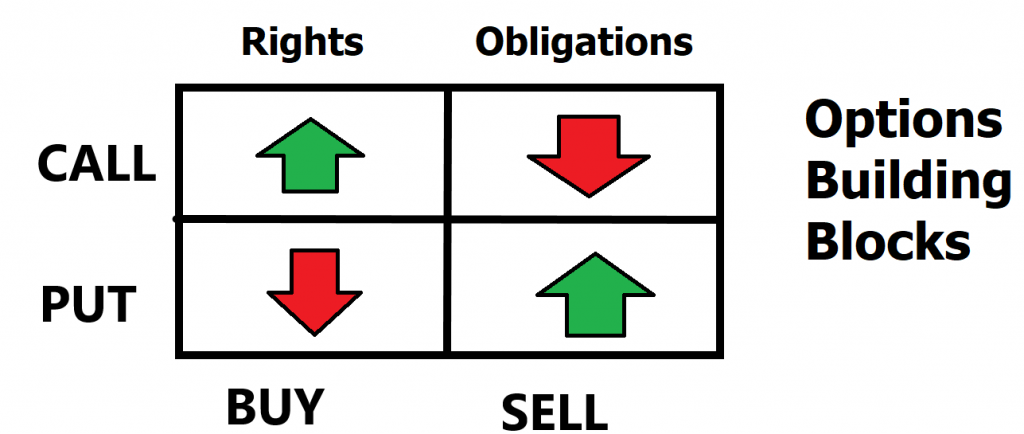
My suggestion is you spend some time studying each building block in this series. Why? Options typically cost much less than the underlying asset, but still offer exposure to the price movements of that asset without owning it. Mastering this arena is how professionals manage risk and create income with minimal risk in the marketplace.
We will explore all these tactics and strategies in this “Options Trading for Beginners” series.
In the interim, I’d like to invite you to attend our free Learn to Trade with A.I. Masterclass. On these trainings we teach traders how to artificial intelligence, neural networks and intermarket analysis can locate and isolate trading opportunities quickly and effectively.
The Answer A.I. offers may surprise you.
This is how small traders grow their accounts by taking small bites out of the market consistently.
Today Artificial Intelligence, Machine Learning and Neural Networks are an absolute necessity in protecting your portfolio.
A.I., through advanced pattern recognition, analyzing hundreds of thousands of data points, and crunching millions of computations, finds the highest probability trades and is indispensable in separating fact from fiction.
I, like everybody else, have my opinions about what will happen next. But I never let my opinion get in the way of what the artificial intelligence is forecasting. Combining, ai with options trading is how Power Traders learn how to grow their portfolios.
This is how Vantagepoint artificial intelligence simplifies and empowers traders daily!
Intrigued?
Discover why artificial intelligence is the solution professional traders go to for less risk, more rewards, and guaranteed peace of mind.
Visit With US and check out the a.i. at our Next Live Training.
It’s not magic. It’s machine learning.
Make it count.
THERE IS A SUBSTANTIAL RISK OF LOSS ASSOCIATED WITH TRADING. ONLY RISK CAPITAL SHOULD BE USED TO TRADE. TRADING STOCKS, FUTURES, OPTIONS, FOREX, AND ETFs IS NOT SUITABLE FOR EVERYONE.IMPORTANT NOTICE!
DISCLAIMER: STOCKS, FUTURES, OPTIONS, ETFs AND CURRENCY TRADING ALL HAVE LARGE POTENTIAL REWARDS, BUT THEY ALSO HAVE LARGE POTENTIAL RISK. YOU MUST BE AWARE OF THE RISKS AND BE WILLING TO ACCEPT THEM IN ORDER TO INVEST IN THESE MARKETS. DON’T TRADE WITH MONEY YOU CAN’T AFFORD TO LOSE. THIS ARTICLE AND WEBSITE IS NEITHER A SOLICITATION NOR AN OFFER TO BUY/SELL FUTURES, OPTIONS, STOCKS, OR CURRENCIES. NO REPRESENTATION IS BEING MADE THAT ANY ACCOUNT WILL OR IS LIKELY TO ACHIEVE PROFITS OR LOSSES SIMILAR TO THOSE DISCUSSED ON THIS ARTICLE OR WEBSITE. THE PAST PERFORMANCE OF ANY TRADING SYSTEM OR METHODOLOGY IS NOT NECESSARILY INDICATIVE OF FUTURE RESULTS. CFTC RULE 4.41 – HYPOTHETICAL OR SIMULATED PERFORMANCE RESULTS HAVE CERTAIN LIMITATIONS. UNLIKE AN ACTUAL PERFORMANCE RECORD, SIMULATED RESULTS DO NOT REPRESENT ACTUAL TRADING. ALSO, SINCE THE TRADES HAVE NOT BEEN EXECUTED, THE RESULTS MAY HAVE UNDER-OR-OVER COMPENSATED FOR THE IMPACT, IF ANY, OF CERTAIN MARKET FACTORS, SUCH AS LACK OF LIQUIDITY. SIMULATED TRADING PROGRAMS IN GENERAL ARE ALSO SUBJECT TO THE FACT THAT THEY ARE DESIGNED WITH THE BENEFIT OF HINDSIGHT. NO REPRESENTATION IS BEING MADE THAT ANY ACCOUNT WILL OR IS LIKELY TO ACHIEVE PROFIT OR LOSSES SIMILAR TO THOSE SHOWN.





